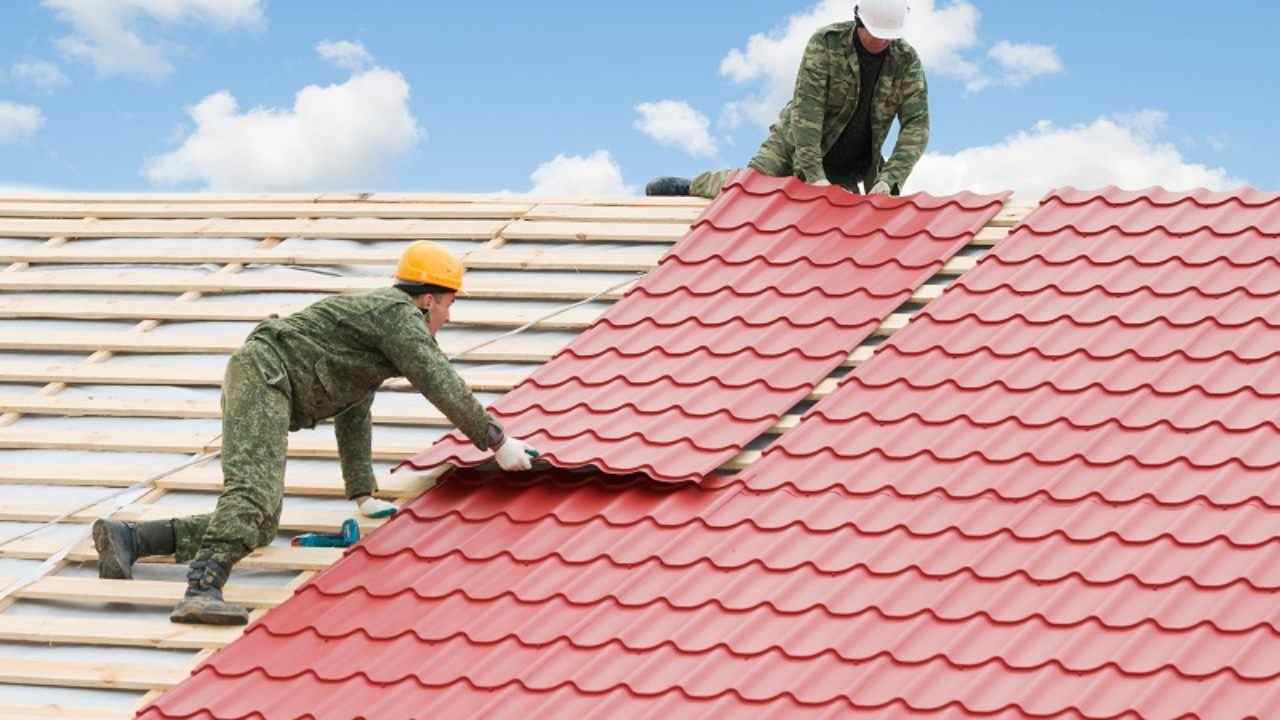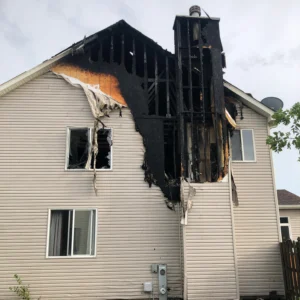Blogs
Fire-Resistant Building Materials for Plano Homes

When it comes to safeguarding your Plano home, choosing fire-resistant building materials is crucial. Not only do these materials help protect your property from the threat of fire, but they also enhance its overall durability and safety. Whether you’re building from scratch or renovating, incorporating materials like fire-resistant drywall, roofing, and siding can make a big difference. And if you’re dealing with any fire-related damage, Intensa Dry is here to help with their expert water damage cleanup services. Together, these choices ensure your home stands strong against both fire and water hazards.
When it comes to protecting your home, fire safety should be a top priority. Living in Plano, you’re already aware of the unique challenges that come with our climate and environment. From occasional wildfires to the risk of house fires due to electrical issues or accidents, ensuring your home is equipped with fire-resistant building materials can make all the difference. In this guide, we’ll explore the best fire-resistant materials for Plano homes, their benefits, and how they work together to keep your property safe. Plus, we’ll touch on how Intensa Dry can help with water damage cleanup if the worst does happen.
Understanding Fire-Resistant Materials
Understanding fire-resistant materials is crucial for safeguarding your home, but it’s also important to address any damage if a fire occurs. For Plano residents, restoring fire-damaged HVAC systems is a key aspect of recovery. Professional services can assess and repair HVAC systems to ensure they operate safely and efficiently after fire damage. Using fire-resistant materials in construction, combined with proper restoration of damaged systems, ensures comprehensive protection and recovery for your home.
Fire-resistant materials are designed to withstand high temperatures and prevent the spread of flames. They can protect structural components of your home, such as walls, roofs, and floors, giving you valuable time to escape and reducing the risk of extensive damage. These materials are typically classified based on their ability to resist fire for a specific period, such as 30, 60, or 90 minutes.
Here’s a rundown of some of the best fire-resistant materials you might consider for your Plano home:
1. Fire-Resistant Drywall
Also known as Type X drywall, this material is specially designed to resist fire for up to an hour. It’s made with a core that includes gypsum, which is known for its fire-resistant properties. When exposed to flames, the water in the gypsum crystal structure evaporates, slowing down the spread of fire. This type of drywall is commonly used in areas like garages, basement ceilings, and between floors.
Benefits:
- Helps to contain fires and protect structural components.
- Often used in combination with fire-resistant insulation for added protection.
- Easy to install and finish.
2. Fire-Resistant Roofing Materials

Your roof is one of the most vulnerable parts of your home when it comes to fire. Choosing the right roofing material can significantly impact your home’s fire safety. Options like metal roofing, asphalt shingles with a Class A fire rating, and clay or concrete tiles offer excellent fire resistance.
Metal Roofing:
Made from materials like steel or aluminum, metal roofing can withstand high temperatures and is highly resistant to fire. It also has the added benefit of being low maintenance and long-lasting.
Asphalt Shingles:
Look for asphalt shingles that are rated Class A, the highest fire rating available. These shingles are treated with fire-resistant materials and are a cost-effective option.
Clay and Concrete Tiles:
These tiles are non-combustible and can resist high temperatures, making them a great choice for fire-prone areas.
Benefits:
- Offers protection from embers and high temperatures.
- Enhances the overall durability and lifespan of your roof.
- Can improve your home’s energy efficiency.
3. Fire-Resistant Siding
When it comes to siding, materials like fiber-cement siding and stucco are excellent choices for fire resistance. Fiber-cement siding is made from a blend of cement, sand, and cellulose fibers, which makes it highly resistant to fire. Stucco, made from a mixture of sand, cement, and lime, also provides a non-combustible exterior.
Fiber-Cement Siding:
This type of siding is durable, low-maintenance, and offers a high level of fire resistance. It’s available in various styles and finishes, so you can choose one that complements your home’s aesthetic.
Stucco:
Stucco is a traditional material known for its fire-resistant properties. It can be applied in various textures and colors, adding both beauty and protection to your home.
Benefits:
- Protects your home’s exterior from fire damage.
- Requires minimal maintenance and offers long-lasting durability.
- Can enhance your home’s curb appeal.
4. Fire-Resistant Insulation
Insulation plays a critical role in maintaining your home’s temperature, but it can also contribute to fire safety. Mineral wool (also known as rock wool) and fiberglass insulation are both fire-resistant options.
Mineral Wool:
Made from molten rock or slag, mineral wool is highly resistant to fire and can withstand temperatures up to 1,200 degrees Fahrenheit. It also provides excellent soundproofing and thermal insulation.
Fiberglass:
While not as fire-resistant as mineral wool, fiberglass insulation can still offer some level of protection. It’s made from glass fibers and is treated to resist flames.
Benefits:
- Enhances fire protection when used in combination with fire-resistant drywall and other materials.
- Provides additional benefits like soundproofing and thermal insulation.
- Can be installed in walls, attics, and floors.
5. Fire-Resistant Windows and Doors
Windows and doors can be vulnerable points in a home’s fire defense. Choosing fire-resistant options can help prevent the spread of flames and smoke. Look for windows and doors with fire-rated glass or frames made from materials like steel or fiberglass.
Fire-Rated Glass:
This type of glass is designed to withstand high temperatures and prevent the passage of flames and smoke. It’s commonly used in windows, doors, and partitions.
Steel or Fiberglass Doors:
These materials are non-combustible and can resist fire for a certain period. Steel doors are often used for exterior doors, while fiberglass doors can offer a more decorative option.
Benefits:
- Provides additional protection against fire and smoke.
- Enhances the overall safety and security of your home.
- Available in various styles and finishes to match your home’s design.
6. Fire-Resistant Decking

If you have a deck, choosing fire-resistant decking materials can help protect it from fire damage. Options like composite decking, which is made from a blend of wood fibers and plastic, and fire-resistant wood treatments can enhance your deck’s fire safety.
Composite Decking:
Made from a combination of wood fibers and plastic, composite decking is designed to resist fire and is low-maintenance. It’s available in various colors and styles to suit your preferences.
Fire-Resistant Wood Treatments:
Treating your wooden deck with fire-resistant chemicals can help improve its fire resistance. This option allows you to keep the natural look of wood while enhancing its safety.
Benefits
- Adds an extra layer of protection to your outdoor living spaces.
- Reduces maintenance and extends the lifespan of your deck.
- Can be customized to fit your style and design preferences.
How Intensa Dry Fits In
While fire-resistant building materials are crucial for preventing and mitigating fire damage, it’s also important to consider how to handle damage if it does occur. Intensa Dry specializes in water damage cleanup, which can be a critical service if fire suppression efforts lead to water damage in your home.
Why Choose Intensa Dry?
Choosing Intensa Dry is a smart decision for comprehensive home recovery. They offer expert water damage cleanup, essential after fire suppression efforts, and provide specialized fire damage restoration services to repair and restore affected areas. Their skilled team ensures thorough assessment, cleaning, and restoration of damaged structures and systems, including HVAC. With Intensa Dry, you get reliable, prompt service that addresses both water and fire damage, helping you return to normalcy with confidence.
Expertise in Water Damage:
Intensa Dry has the experience and equipment needed to handle water damage efficiently, minimizing the risk of mold growth and structural issues.
Comprehensive Services:
From water extraction to drying and dehumidification, their services cover all aspects of water damage cleanup.
Fast Response:
In the event of water damage, timely intervention is key. Intensa Dry offers prompt service to help you get your home back to normal as quickly as possible.
Combining Fire and Water Protection
Combining fire and water protection is crucial for comprehensive home safety. Using fire-resistant materials helps prevent damage, while timely water damage cleanup from experts like Intensa Dry addresses any issues from firefighting efforts. Additionally, reconstruction services are essential for repairing and rebuilding affected areas to restore your home fully. By integrating fire and water protection strategies with professional reconstruction, you ensure your home is resilient and safe, providing peace of mind in the face of any disaster.
When planning for fire safety, it’s important to consider both fire and water protection. Fire-resistant materials will help you prevent and control fire damage, but having a plan for water damage, whether from firefighting efforts or other sources, is also essential. By using fire-resistant materials and working with experts like Intensa Dry for water damage cleanup, you can ensure comprehensive protection for your Plano home.
FAQs
What is the most fireproof material for a house?
The most fireproof material for a house is generally considered to be steel, due to its high melting point and non-combustibility. Concrete is also highly fire-resistant, as it can withstand extreme temperatures and prevent the spread of flames. Additionally, materials like fiber-cement siding and fire-resistant glass offer excellent protection when used in combination with these primary fireproofing options.
What construction material is used for its fire resistance?
Construction materials known for their fire resistance include steel, which resists high temperatures and does not burn. Concrete is another popular choice, offering durability and fire resistance due to its non-combustible nature. Additionally, fire-resistant drywall and fiber-cement siding provide effective barriers against fire and are commonly used in both residential and commercial buildings.
What materials are used for fireproofing?
Materials used for fireproofing include concrete, which is inherently non-combustible and provides strong fire resistance. Steel can be fireproofed with specialized coatings that protect it from high temperatures. Additionally, fire-resistant drywall, fiber-cement siding, and fire-resistant glass are commonly applied to enhance the fire safety of buildings.
What material is flame resistant?
Flame-resistant materials are designed to withstand direct exposure to flames without igniting. Common examples include flame-resistant fabrics like Nomex and Kevlar, used in protective clothing. Additionally, materials such as treated wood, fiber-cement siding, and certain coatings can also offer flame resistance in construction applications.
Which material does not burn in fire?
Materials that do not burn in fire include concrete and steel, which are non-combustible and can withstand high temperatures without igniting. Fire-resistant materials like gypsum board also have a high resistance to fire due to their ability to resist heat and prevent flames from spreading. Additionally, mineral wool insulation is another example of a material that does not burn and provides excellent fire protection.
Conclusion
Investing in fire-resistant building materials is a smart move for any Plano homeowner looking to enhance their property’s safety and durability. From fire-resistant drywall and roofing to siding and decking, there are many options available to protect your home. And with services from Intensa Dry, you can be prepared for any water damage that may arise. By combining these strategies, you’ll have peace of mind knowing your home is well-protected against both fire and water hazards.

